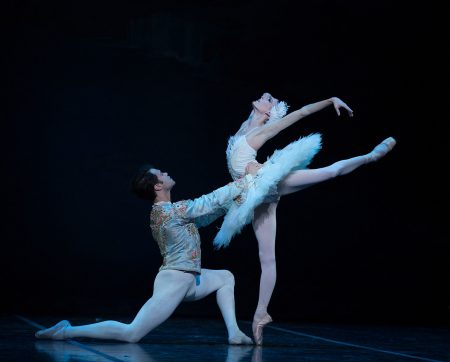
What Is Odettes Variation Called?
Table of Contents
What Is Odettes Variation Called?
Ballet is a world of elegance, precision, and rich terminology. One of the most iconic roles in classical ballet is Odette, the Swan Queen from Swan Lake. Dancers and ballet enthusiasts often refer to her solos as “variations,” but is there a specific name for Odette’s variation? Let’s explore the terminology and significance of this beloved piece.
Understanding Ballet Variations
In ballet, a variation is a solo dance that showcases a character’s emotions, technical skill, and artistry. Many classical ballets, such as Swan Lake, The Sleeping Beauty, and Giselle, feature variations for principal characters.
Odette’s Most Famous Variation
Odette’s most recognizable solo is often simply called “Odette’s Variation” or the “White Swan Pas de Deux Variation.” It is typically performed in Act II of Swan Lake, when Prince Siegfried first encounters Odette by the moonlit lake.
This variation is characterized by:
- Soft, fluid movements – Emulating the grace of a swan.
- Port de bras (arm movements) – Delicate and expressive, mimicking wings.
- Pirouettes and développés – Highlighting Odette’s vulnerability and beauty.
- What Is Odettes Variation Called?
Is There an Official Name?
While many variations in ballet have formal titles (like “The Rose Adagio” from The Sleeping Beauty), Odette’s variation is not universally named beyond descriptive terms. Some refer to it by its musical cues, such as:
- “Odette’s Act II Variation”
- “The White Swan Variation” (to distinguish it from Odile’s Black Swan Variation)
In choreographic terms, different ballet companies may have their own names based on the version they perform (Petipa, Ivanov, Bourmeister, etc.) What Is Odettes Variation Called?.
Why the Distinction Matters
What Is Odettes Variation Called? Understanding ballet terminology helps dancers, students, and audiences appreciate the nuances of each role. Odette’s variation is a masterpiece of lyrical ballet, contrasting sharply with Odile’s fiery, technical variation in Act III.
What Is a Variation in Ballet What Is Odettes Variation Called?
A variation (or pas seul) is a solo dance that highlights a character’s emotions, technical prowess, and artistry. In classical story ballets like Swan Lake, Giselle, and The Sleeping Beauty, variations are essential for character development.
Odette’s variation is a lyrical solo, emphasizing grace, fluidity, and vulnerability—qualities that define her as the White Swan.

The Many Names for Odette’s Variation
Unlike some ballet solos with fixed titles (e.g., Kitri’s Act I Variation from Don Quixote), Odette’s variation is referred to in different ways:
1. “Odette’s Act II Variation”
The most common name, specifying that it occurs in Act II of Swan Lake, when Prince Siegfried first meets Odette by the enchanted lake.
2. “The White Swan Variation”
This distinguishes it from Odile’s variation (the Black Swan), which is more bravura and technically explosive.
3. By Musical Cue: “Andante, Moderato”
Some dancers and musicians refer to it by its tempo marking in Tchaikovsky’s score.
4. Choreographer-Specific Names
Different productions may label it based on the version performed:
- Petipa/Ivanov (1895) – The most famous version, with soft, floating movements.
- Bourmeister, Nureyev, or modern stagings – Some choreographers rename or restructure variations.
Breaking Down Odette’s Variation: Choreography & Music
Odette’s solo is a masterclass in lyrical ballet, blending:
- Port de bras (arm movements) – Mimicking the delicate wings of a swan.
- Arabesques and développés – Slow, controlled extensions that convey longing.
- Pirouettes en dehors – Gentle turns that reflect her ethereal nature.
Musically, Tchaikovsky’s composition is in A minor, with a melancholic, flowing melody carried by violins and woodwinds. The tempo is slow (andante), reinforcing Odette’s tragic beauty.
Odette vs. Odile: Contrasting Variations
| Feature | Odette (White Swan) | Odile (Black Swan) |
|---|---|---|
| Music | Lyrical, legato | Staccato, fiery |
| Mood | Tragic, vulnerable | Seductive, powerful |
| Technique | Fluid adagio | Sharp fouettés & jumps |
| Costume | White tutu | Black tutu |
This duality is central to Swan Lake’s dramatic impact.
Why Does the Name Matter?
- For dancers: Knowing the correct terminology ensures clarity in rehearsals.
- For audiences: Understanding variations deepens appreciation of the ballet.
- For historians/choreographers: Preserving the correct names maintains ballet’s legacy.
Want to Learn More?
- Explore Odile’s 32 fouettés in the Black Swan Pas de Deux
- Compare Giselle’s Act I & Act II variations
- Discover how modern choreographers reinterpret classical variations
Part 1: The Historical Context of Odette’s Variation
Origins in the 1895 Petipa/Ivanov Production
While Swan Lake premiered in 1877, it was the 1895 revival by Marius Petipa and Lev Ivanov that cemented Odette’s variation as we know it today. Ivanov’s choreography emphasized:
- Fluid, birdlike port de bras (arm movements)
- Slow, sustained adagio movements to contrast with Odile’s sharpness
- Use of the “swan” motif—arched backs, fluttering hands, and deep penchés
Tchaikovsky’s Musical Genius
The variation is set to a haunting A minor melody, with:
- Legato strings creating a sense of longing
- Woodwind flourishes mimicking bird calls
- A waltz-like rhythm that gives the solo its floating quality
- What Is Odettes Variation Called?
How the Variation Has Evolved What Is Odettes Variation Called?
While the Petipa/Ivanov version remains standard, later choreographers have put their own spin on it:
- Rudolf Nureyev’s 1964 version added more dramatic pauses What Is Odettes Variation Called?
- Matthew Bourne’s all-male Swan Lake reinterpreted the variation with raw athleticism
- Contemporary ballet companies sometimes infuse it with more angular, modern movements
Part 2: Choreographic Breakdown – What Makes Odette’s Variation Unique?
Signature Movements
- The “Swan Arms” (Port de Bras)
- Soft, undulating motions that suggest wings
- A trademark of the role, requiring extreme control
- Pirouettes in Attitude
- Unlike Odile’s flashy fouettés, Odette’s turns are slow and controlled
- Penchés and Arabesques
- Deep forward bends that convey vulnerability
- Extended arabesques that seem to “melt” into the next step
- The “Dying Swan” Influence
- Mikhail Fokine’s famous solo The Dying Swan (1905) borrowed heavily from Odette’s movement vocabulary
Musical Phrasing & Timing
- The variation follows a 3/4 waltz tempo, but with rubato (expressive slowing/speeding)
- Key moments sync with musical accents, like a crescendo into a développé
Part 3: Legendary Interpretations – How Ballerinas Make the Role Their Own What Is Odettes Variation Called?
Galina Ulanova (Soviet Era)
- Emphasized Odette’s tragic humanity, with weighted, sorrowful movements
Margot Fonteyn (1960s)
- Brought a regal, floating quality, making the technical challenges seem effortless
Natalia Makarova (1970s-80s)
- Added dramatic pauses, stretching musical phrasing for emotional effect
- Modern Stars:Nuñez & Diana Vishneva
Modern Stars: Marianela Nuñez & Diana Vishneva
- Nuñez focuses on silky-smooth transitions
- Vishneva adds darker, more psychological depth
Part 4: The Psychology of Odette’s Movement – What Is Odettes Variation Called?
Key Themes Expressed Through Dance
- Entrapment vs. Freedom
- Constricted upper body vs. soaring leg extensions
- Humanity vs. Animal Instinct
- Delicate hands (human) vs. wing-like arms (swan)
- Hope vs. Despair
- Reaching gestures toward Siegfried contrasted with collapsing motions
- What Is Odettes Variation Called?
Why Audiences Connect So Deeply
- The variation is a wordless soliloquy—every movement tells her story
- The music’s aching beauty makes it universally moving
Part 5: Odette’s Variation in Ballet Training
Why It’s a Technical Benchmark
- Tests a dancer’s control, musicality, and emotional expression
- Often used in ballet competitions and company auditions
Common Challenges for Dancers
- Maintaining “Swan” Posture
- Keeping the back arched without losing balance
- Seamless Transitions
- The variation has no pauses—every movement flows into the next
- Acting While Dancing
- Unlike Odile’s bravura, Odette requires subtle facial expressions What Is Odettes Variation Called?
Conclusion: The Eternal Allure of the White Swan
Odette’s variation transcends its label—whether you call it “The White Swan Solo” or “Act II’s Adagio.” It remains one of ballet’s most poetic moments because it isn’t just steps—it’s storytelling in motion.
Further Exploration
- Compare film versions, like Black Swan (2010) vs. live performances
- Analyze how male dancers interpret the role in non-traditional casts
- Study Tchaikovsky’s original score vs. modern orchestral interpretations
Conclusion:
In deciphering the nomenclature of Odette’s variation, we learn more than the title of a solo—we enter the complicated language of ballet itself. Most often called Odette’s Variation or the White Swan Pas de Deux Variation, the piece is usually danced in Act II of Swan Lake and features the lyrical, expressive richness of Odette’s What Is Odettes Variation Called? personality. Though it is not necessarily given a single official title in every production, its name comes from its music (Tchaikovsky’s score) and emotive choreography. Knowing these naming traditions demystifies classical ballet for new viewers and brings out the mix of tradition, interpretation, and artistry that makes up the world of ballet What Is Odettes Variation Called.
ALSO READ
Hyundai Finance: Seamless Car Financing Made Easy
The Best Good Morning Meme to Kickstart Your Day
Alps Tucker Carlson: Exploring the Iconic Mountain Range
Accelerate Your Finances: if how speed net worth’s Advice
11th Gen Civic: The Ultimate Automotive Upgrade
Sherrill Redmon: Renowned Expert in [Relevant Descriptor]
FAQs:
What Is Odettes Variation Called?
Odette’s variation is most commonly referred to as “Odette’s Variation” or “White Swan Variation” from Swan Lake, Act II.
It is the solo danced by Odette—the White Swan—when she first meets Prince Siegfried by the lake. This variation is known for its lyricism, elegance, and expressive port de bras (arm movements), which are meant to evoke the image of a swan.
What Is the Significance of Odettes Variation?
The importance of Odette’s Variation is its narrative and emotional strength. It presents Odette as a kind, tragic character, whose sorrow and yearning are communicated through elegant, swan-like movements. It represents her imprisonment by a curse and her aspiration for love and liberation. Later, it is contrasted with the confidence of Odile’s variation, emphasizing the ballet’s themes of truth, love, and deception. Aesthetically, it’s a time for the ballerina to express rich emotion and exquisite technique, and it’s therefore considered one of the most famous and moving solos in classical ballet.











